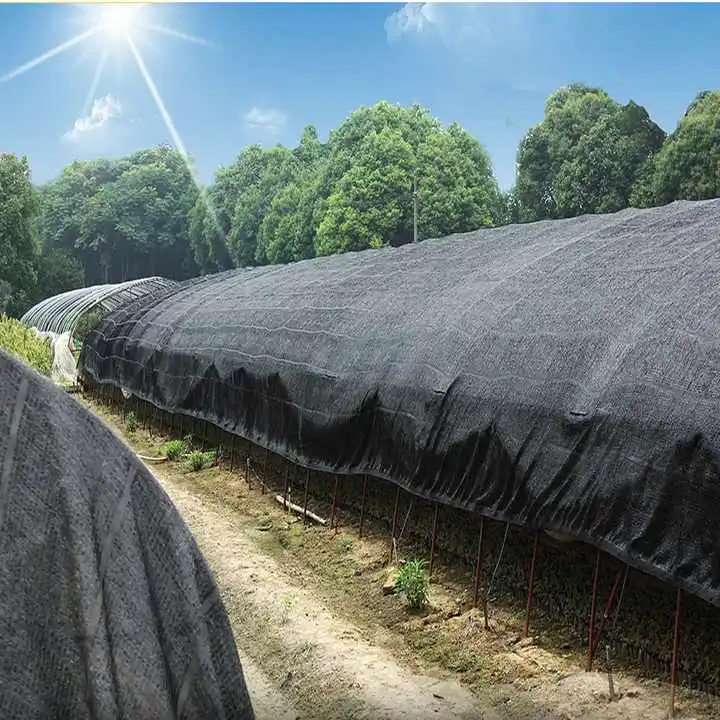What Is a Shade Net and Why Do You Need One?
2024-11-15
Shade nets have become essential tools for many industries and everyday applications, offering effective solutions to protect plants, people, and spaces from harsh sunlight. But what exactly is a shade net, and why is it so useful in so many different settings? Let’s dive into the world of shade nets and discover their many benefits.
What Is a Shade Net?
A shade net is a fabric made from high-density polyethylene (HDPE) or other durable synthetic materials designed to provide protection from sunlight. This fabric is woven or knitted in a way that allows it to block out varying levels of sunlight, typically ranging from 30% to 90% shade, depending on the application. Shade nets come in different colors and densities, each with specific purposes, and can be custom-fitted to cover spaces of any size.
Key Benefits of Shade Nets
- UV Protection: Shade nets are specially designed to block harmful UV rays, reducing the risk of sun damage.
- Temperature Control: By filtering sunlight, shade nets help lower the temperature in the covered area, creating a cooler and more comfortable environment.
- Water Retention: The mesh structure allows air and water to penetrate, which is beneficial for agricultural use as it helps maintain moisture levels in the soil.
- Durability: Most shade nets are UV-stabilized, making them resistant to sun damage, and can last for several years, even in harsh weather conditions.
- Versatility: Shade nets can be used in a variety of settings, from small gardens to large-scale agricultural fields, as well as in residential, commercial, and recreational areas.
Common Uses of Shade Nets
1. Agriculture and Horticulture
One of the primary uses of shade nets is in agriculture. Farmers and gardeners use shade nets to protect crops from excessive sunlight, which can scorch plants and reduce their yield. By providing filtered sunlight, shade nets help create an optimal growing environment for crops like vegetables, fruits, and flowers. The nets also protect plants from weather elements like wind, hail, and even insects, creating a controlled microclimate.
2. Greenhouses
In greenhouses, shade nets regulate the amount of light that enters, preventing overheating and providing ideal conditions for plant growth. Some plants thrive under specific light conditions, and shade nets enable growers to adjust sunlight levels according to the plants' needs. They also help maintain stable humidity levels, which is crucial for sensitive plants.
3. Outdoor Recreation and Public Spaces
Shade nets are common in outdoor spaces like playgrounds, sports facilities, swimming pools, and parks. They offer sun protection and help keep these areas cooler, making them comfortable and safer for people to enjoy. Shade nets reduce the risk of sunburns and overheating, making them essential in hot climates or during summer.
4. Livestock and Poultry Farming
Farmers often use shade nets in livestock and poultry farming to protect animals from direct sunlight and to reduce heat stress, which can affect their health and productivity. Shaded areas allow animals to cool off and have a comfortable environment, promoting their well-being and improving the quality of animal products.
5. Residential Applications
Homeowners use shade nets in various ways around their properties. They can be used to create shaded patios, carports, or backyard seating areas, enhancing outdoor living spaces. Shade nets are also popular in gardening to protect delicate plants or flowers and in DIY projects like building sunshades over pools or sandpits.
Types of Shade Nets
Shade nets come in different types and materials, each suited to specific needs:
- Green Shade Nets: Commonly used in agriculture, green shade nets blend well with the natural environment and offer different shade levels, such as 30%, 50%, and 75%.
- Black Shade Nets: These nets are ideal for more intense sunlight and are often used in commercial or industrial settings.
- White Shade Nets: White nets provide moderate shading while allowing ample light diffusion, making them suitable for greenhouses.
- Customized Shade Nets: Some manufacturers offer customized nets with specific shade percentages or even reinforced edges for added durability.
Choosing the Right Shade Net
Selecting the correct shade net depends on your specific needs. Here are a few factors to consider:
- Shade Percentage: Determine the level of shading needed based on your application. For agriculture, a 50% or 70% shade net is often ideal, while for recreational use, an 80% or higher shade may be more suitable.
- Color: Colors like green and black offer varying levels of sun blockage and heat absorption. Green is often preferred for horticulture, while black provides maximum shade.
- Material Quality: Look for UV-stabilized shade nets if you plan to use them in areas with high sun exposure, as they are more durable.
- Installation Requirements: Some shade nets are easier to install than others, so consider the size and shape of the area to be covered.
Are There Any Drawbacks?
While shade nets are highly beneficial, there are a few considerations to keep in mind. Overuse or using an excessively high shade percentage can limit sunlight too much, affecting the growth of sun-loving plants. Additionally, improper installation or poor-quality materials may lead to tearing or reduced effectiveness over time.
Conclusion
Shade nets are a practical, versatile solution for protecting plants, animals, and people from excessive sun exposure. With options to suit every need, they have become an indispensable tool in agriculture, recreation, and residential areas alike. Whether you're a farmer looking to improve crop yield, a parent wanting a sun-safe play area, or simply looking to create a cooler outdoor space, a shade net could be just what you need to beat the heat and protect your space from the sun.



